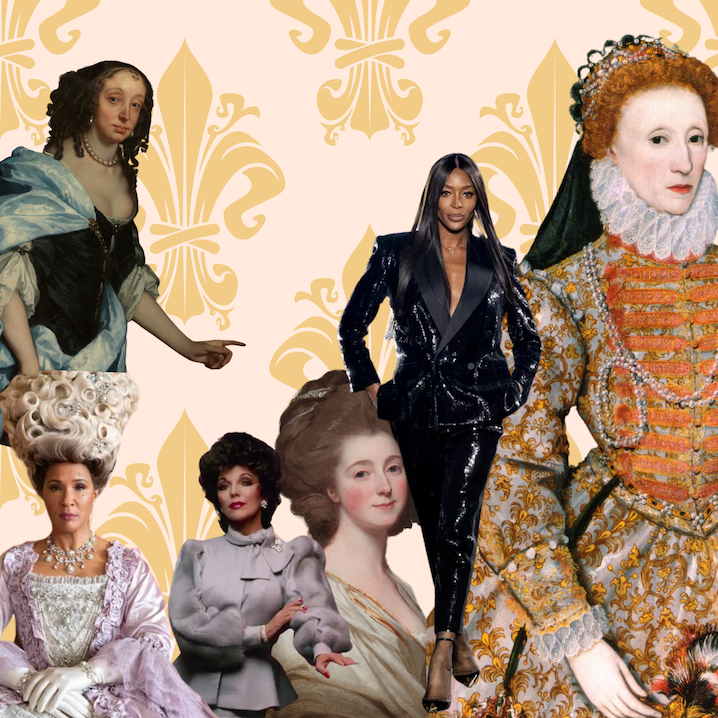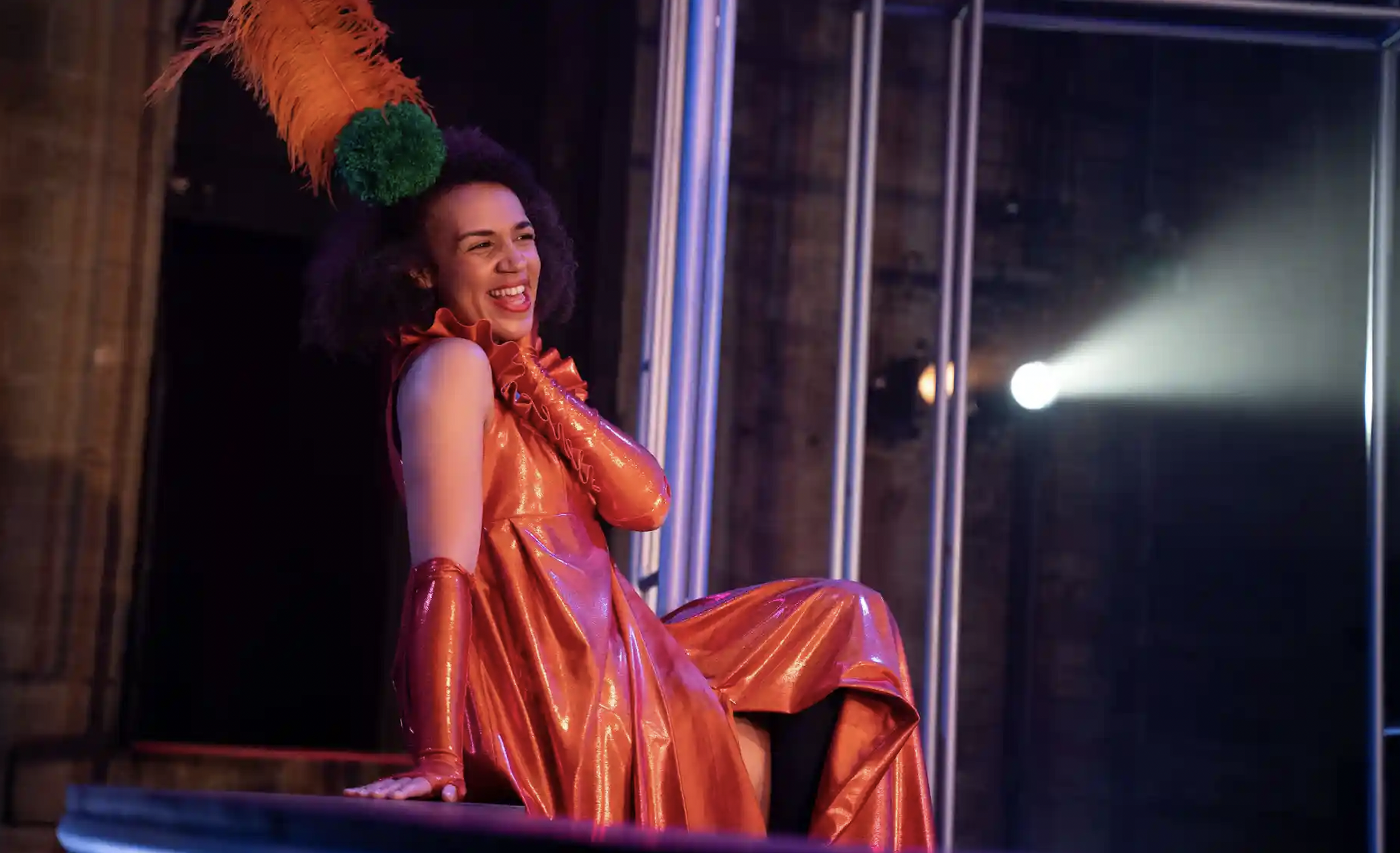EPISODE 166 FEATURES JESSICA WORRALL
What comes to mind when you hear the phase: power dressing? In the 1980s, it was big news in the corporate world - with women in big-shouldered designer suits, showing the men who’s boss. But using clothes to communicate your status goes back as far as fashion does. In Ancient Rome, it meant the right to wear purple. If you were a courtier at Versailles, it meant the finest brocades.
Today, you might think that if you can afford it, you can have it, but as Kim Kardashian proved at the Met Gala last week - it’s still complicated. There remain many circumstances when other people try to tell us what we can and can’t wear, and what is appropriate.
“There’s always been a way of using clothes as a powerful tool,” says this week’s guest, British costume designer Jessica Worrall. In her work costuming theatre and film productions, she uses clothes to signify what characters stand for and how they fit in to the storyline. Her latest project uses digital collage art to mash up portraiture by old masters with modern runway looks. Have the power dynamics of fashion today changed much since Elizabeth I of England’s sumptuary laws dictated how who wore what? You decide.
ABOUT JESSICA WORRALL A costume designer with 30 years experience working in both mainstream and experimental threatre, Jessica Worrall is now also working as a digital collage artist.
She explains: “Displays of wealth through clothing have been prevalent since ancient times. In the UK and throughout Europe the Sumptuary Laws of the Middle Ages were brought in to monitor and maintain social hierarchy and order through clothes. The type of dress, use of certain materials, colours, decorative elements, numbers of layers of garments were confined to specific class categories and punishments were meted out to any who broke these rules. These laws were unchanged until the mid 18th century but their influence lives on today in a fashion industry which is driven by aspirations of social mobility. The display of ones social standing through dress has perhaps become more subtle and eclectic seen now in choice of cut, fabric, finish and of course exclusive brand name. All this sustained by cheap, mainly female labour from the elizabethan seamstress to the sweatshop factory.
“I have taken these ideas forward into this new personal work that is concerned with how costume and clothing shape, influence and enforce our understanding of female identity and social status within a hierarchical society.” Read the rest here. Find her Instagram here, and the Etsy shop here.
NOTES
COSTUME DESIGN The Oscars website has a 20-page document on this, it begins: “Whether, a [story] is set in the present, the past, in a distant location or in an imaginary time and place, costume designers (collaborating with the director etc.) help bring the characters to life…Costumes communicate the details of a character’s personality to the audience.” Download it here.
QUALITY STREET is a comedy in four acts, set between the Napoleonic wars, by J. M. Barrie, written before his more famous work Peter Pan. Read the Guardian review of the production Jessica worked on in 2020, here.
Charlotte Parratt in Quality Street, costumed by Jessica Worrall, at the Viaduct Theatre, Halifax, 2020
Jessica Baglow in Quality Street
GENDER-BASED POWER IMBALANCES IN BRITISH THEATRE. In 2010, women made up 68% of theatregoers - but only 34% of actors employed by the National Theatre were women. In 2012, only 24% of directors were women. In 2017 only 27% of university professors teaching theatre and drama were women. The RSC featured no productions by female writers between December 2018 and September 2019. Same story elsewhere.
In 2021: “Men continue to outnumber women and hold the most prestigious positions in theatre programmes…Gender Equality and Diversity in European Theatres, a study by the European Theatre Convention (ETC), finds that four women are mentioned in theatre programmes for every six men—and that men dominate job categories of playwright, director, and technical staff, while women hold more than 70% of the positions of ‘costumes’ and ‘hairdressing’.” Annoying! More here.
REGENCYCORE - really?! Yes, really. “Regency is the fancy, regal fashion trend we’ve been waiting for!” says InStyle. “17 Regencycore Fashion Finds for the Bridgerton Fan” promises Nylon.
Not since Keira Knightley and Matthew Macfadyen did Pride & Prejudice have so many been so gaga for Regency romances - despite their strict societal stratas.
“The British Regency era lasted less than a decade, but it spawned a staggering number of unlikely fictional marriages. On December 25, 2020, Netflix released Bridgerton, a book-to-screen adaption of Julia Quinn’s popular romance novel The Duke and I. Only four weeks after its debut, the series reportedly became one of the streaming giant’s most-watched shows. According to Netflix, around 63 million households immersed themselves in this steamy historical romance. So how did an entire subgenre of literature spring up around a few thousand rich people who lived during the 1810s?” Read the rest on JStor Daily.
“YOU CAN HAVE ANYTHING YOU WANT IN LIFE IF YOU DRESS FOR IT. “ - EDITH HEAD
The Featheringtons in their gaudy finery, on Bridgerton
Was Versace the muse?
“I’M TRYING TO LOOK AT HOW COSTUME AND CLOTHING SHAPES, INFLUENCES AND ENFORCES OUR UNDERSTANDING OF FEMALE IDENTITY WITHIN A HIERARCHICAL MAINLY MALE RUN SOCIETY.” - JESSICA WORRALL
RUFFS “ in dresswear, crimped or pleated collar or frill, usually wide and full, worn in Europe, especially from the mid-16th century into the 17th century, by both men and women. The beginnings of the ruff can be seen in the early years of the 16th century, when men allowed the top of the shirt to be exposed. A drawstring through the top, when pulled tight, created an incipient ruff. The ruff increased in size, becoming a symbol of the aristocracy. Women wanted to show their status in society and also wished to expose the bosom, so the ruff developed as a half circle—open in front and rising in back. The ruff was at first worn with a supporting wire frame and was later starched. Usually, it was white.” Via Britannica.
SUMPTUARY LAWS
Says Jessica: “16th Century Sumptuary laws in Western Europe laid down strict rules not only as to the types of fabrics that particular social classes could or could not wear but also what colour these fabrics could be. So you literally would be able to tell the rank or status of a person not only by the cut but also by the colour of their clothes. And of course the brightest, shiniest colours were reserved for the upper classes. Ostensibly this was to stop people spending beyond their means on expensive fabrics but what it really did was preserve the social order. People could be fined for wearing something they were not permitted to!”
“I like to have the humour in it as well, especially if you’re talking about something serious.’ - Jessica Worrall
NOW & THEN… POWER DRESSING
“POWER DRESSING EQUALS CONFIDENCE AND ALLOWS YOU TO EXPRESS THE POSITION YOU HAVE THROUGH THE CLOTHES THAT YOU WEAR.” - Forbes
In the 1970s The Women's Dress for Success Book popularised the concept of "power dressing" for the office.
“The definition of power dressing has evolved through the years. In the early decades of 1900s women began easing up on restrictive garments and shortening hemlines. By the 1970s, as women were fighting to enter the corporate world, the dress code for success became more about mimicking men as a means of capturing a little bit of their authority and gaining acceptance into the boys' club. The '80s and '90s saw a shift towards a more fiercely feminine brand of power. The suits stayed, but now they had exaggerated shoulders, nipped-in waists, came in bold colors, and didn't shy away from making a statement. For the modern woman, power dressing isn't defined by one look.” Via The Zoe Report.
1980s
2018
Grace Elizabeth photographed by Solve Sundsbo for Vogue China, December 2018

















